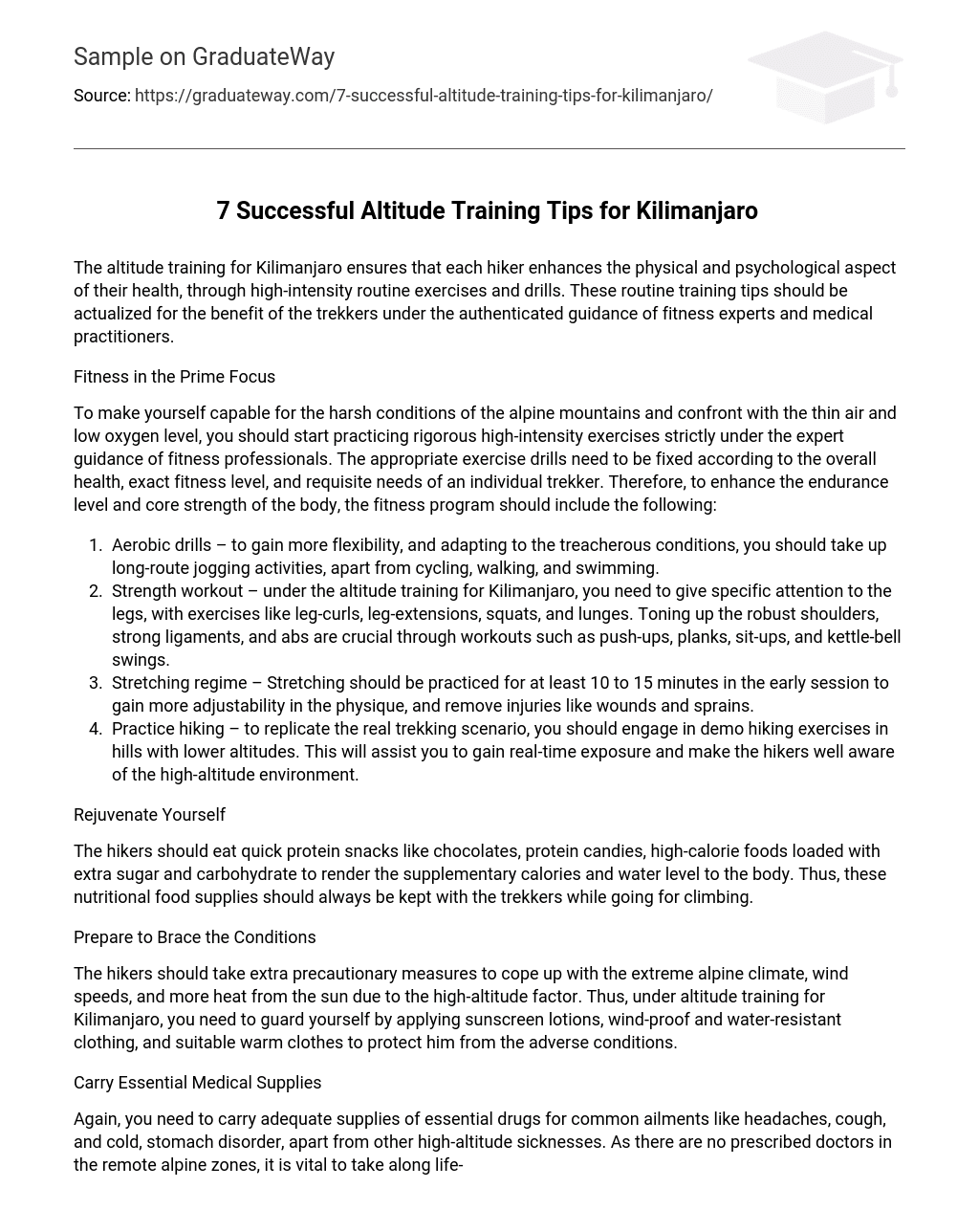The altitude training for Kilimanjaro ensures that each hiker enhances the physical and psychological aspect of their health, through high-intensity routine exercises and drills. These routine training tips should be actualized for the benefit of the trekkers under the authenticated guidance of fitness experts and medical practitioners.
Fitness in the Prime Focus
To make yourself capable for the harsh conditions of the alpine mountains and confront with the thin air and low oxygen level, you should start practicing rigorous high-intensity exercises strictly under the expert guidance of fitness professionals. The appropriate exercise drills need to be fixed according to the overall health, exact fitness level, and requisite needs of an individual trekker. Therefore, to enhance the endurance level and core strength of the body, the fitness program should include the following:
- Aerobic drills – to gain more flexibility, and adapting to the treacherous conditions, you should take up long-route jogging activities, apart from cycling, walking, and swimming.
- Strength workout – under the altitude training for Kilimanjaro, you need to give specific attention to the legs, with exercises like leg-curls, leg-extensions, squats, and lunges. Toning up the robust shoulders, strong ligaments, and abs are crucial through workouts such as push-ups, planks, sit-ups, and kettle-bell swings.
- Stretching regime – Stretching should be practiced for at least 10 to 15 minutes in the early session to gain more adjustability in the physique, and remove injuries like wounds and sprains.
- Practice hiking – to replicate the real trekking scenario, you should engage in demo hiking exercises in hills with lower altitudes. This will assist you to gain real-time exposure and make the hikers well aware of the high-altitude environment.
Rejuvenate Yourself
The hikers should eat quick protein snacks like chocolates, protein candies, high-calorie foods loaded with extra sugar and carbohydrate to render the supplementary calories and water level to the body. Thus, these nutritional food supplies should always be kept with the trekkers while going for climbing.
Prepare to Brace the Conditions
The hikers should take extra precautionary measures to cope up with the extreme alpine climate, wind speeds, and more heat from the sun due to the high-altitude factor. Thus, under altitude training for Kilimanjaro, you need to guard yourself by applying sunscreen lotions, wind-proof and water-resistant clothing, and suitable warm clothes to protect him from the adverse conditions.
Carry Essential Medical Supplies
Again, you need to carry adequate supplies of essential drugs for common ailments like headaches, cough, and cold, stomach disorder, apart from other high-altitude sicknesses. As there are no prescribed doctors in the remote alpine zones, it is vital to take along life-saving medicines for any emergencies.
Keep Yourself Hydrated
Now, while the trekkers are ascending the mountains, it is an essential perspective to drink around five liters of water throughout the entire day. Besides, the water-filled in the bottles is required to be boiled adequately as per the prescribed limit to remove any germs.
Climb Slowly
Climbing the mountains is not a sport or race to win, so you should always take time to adapt to the high-altitude environment. Thus, to avoid high altitude sickness caused due to thin air and less oxygen, it is advisable to accustom to the inhospitable zone, and ascend at a slow but steady pace.
Choose the right season
Now, Mount Kilimanjaro can be climbed throughout the year. However, you should try to climb in the most favorable season, usually falling in January to February, and also from September to October. It is the highest probability to get clear weather in these times of the year.
With these innovative approaches and methods applied, you will be able to set foot on the treacherous lofty heights of Mount Kilimanjaro with success.





